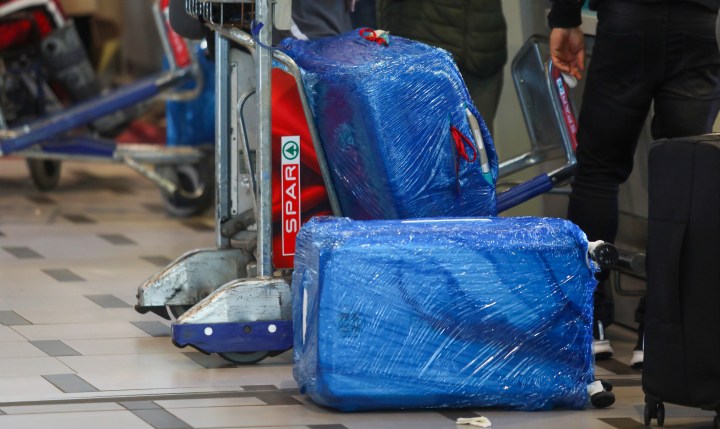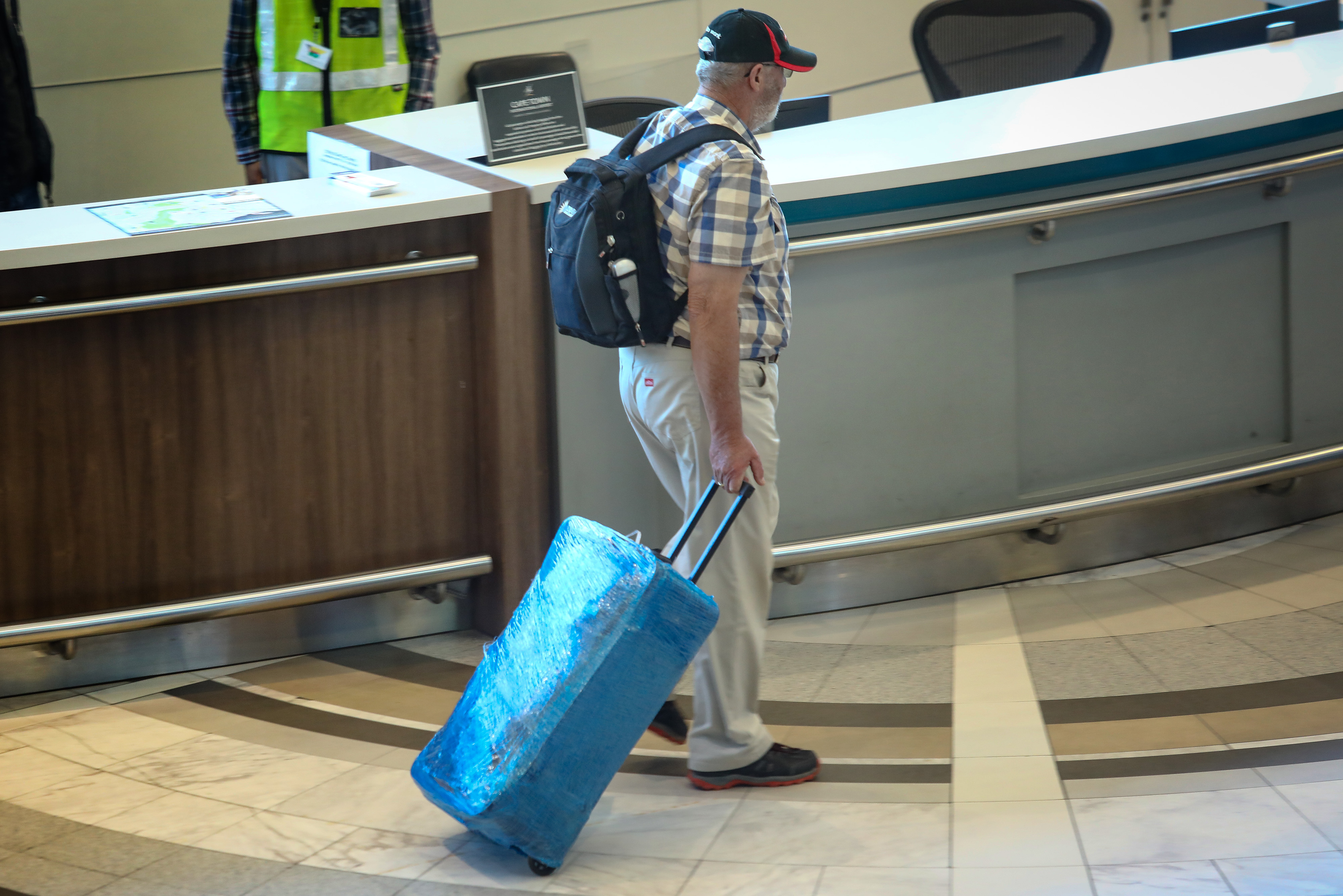AIRLINE WASTE
Soaring impact of single-use plastics blight aviation’s sustainability campaign

It’s predicted that airline passengers will produce 10 million tonnes of waste globally by 2030. As airlines look to decarbonise with sustainable aviation fuels in the future, they should also be concerned about single-use plastics on board.
When arriving at the airport, plastic and cabin waste in general is admittedly not at the forefront of one’s mind and you probably won’t consider the impact of plastics used not only when you travel, but across the aviation sector.
Nevertheless, its impact is huge and severely harms the environment, with the aviation sector already a significant contributor to greenhouse gas (GHG) emissions.
Amid the hustle and bustle at Cape Town International Airport on Tuesday, most travellers purposefully chose not to wrap their luggage in the plastic securing services provided, and said they believe single-use plastics should be phased out of not only the aviation industry, but in society, because of the environmental and human harm it causes.
Lorren de Kock, senior manager for the circular economy programme at WWF South Africa, said the cling wrap used to wrap luggage can reach huge volumes, as evidenced by the number of luggage items wrapped with this plastic just at Cape Town International Airport.
Even though this material is advertised as recyclable, De Kock highly doubts that when removed it is actually recycled.

A man wheels his plastic-wrapped suitcase at Cape Town International Airport. (Photo: Shelley Christians)
Airline passengers alone generated 5.7 million tonnes of waste globally in 2016, most of which went to landfills or incinerators, according to the International Air Transport Association (Iata), an industry trade group of some 290 airlines. By 2030, this number is expected to nearly double to an annual 10 million tonnes.
As airlines look to decarbonise with sustainable aviation fuels, De Kock said they should also be concerned with managing the amount of waste generated by all the single-use plastic used onboard – particularly as more broadly only 9% of plastic waste is recycled while 22% is mismanaged.
De Kock said, “Due to the paucity of collection, sorting, washing (for reusable products) and recycling at destinations, it would be best for airlines to find innovative ways to reduce their reliance on single-use plastic. But this is complex due to the lightweight nature, it being the cheapest option and other reasons for over-using the material.
“The environmental impact of airline catering would be similar to single-use packaging used in other sectors – not only due to lack of end-of-life management but mostly due to the poor design of the products and systems making most of it non-circular and prone to pollution.”
Domestic and international airline waste policies
The aviation sector as a whole is responsible for about 3% of global GHG emissions, prompting big commitments from airlines to decarbonise as fast as possible. However, there have been calls to focus on changes such as phasing out single-use plastics for more sustainable material across the aviation sector in the meantime.
Aviation specialist Linden Burns explains that unlike waste items taken off domestic flights, in South Africa and many other countries, there are public health regulations stipulating that all cabin waste items – waste generated within the aircraft cabin – taken off international flights landing at South African airports, must be treated at a separate waste management facility and not co-mingled with waste from domestic flights.
The standards for handling international cabin waste are generally stricter than those for domestic flights and are designed to be aligned with controls to prevent the spread of human, animal or plant disease.
According to Iata’s cabin waste handbook, “If cabin waste is classified as international catering waste, then recycling and reuse will not be possible and the waste must be treated by steam sterilisation, or disposed of by high-temperature incineration or deep landfall burial (as stipulated by local regulatory requirements).”
Airports Company South Africa (Acsa) adds that there are also legal considerations in place where international airline waste is considered hazardous waste, and where it cannot be mixed with domestic airline waste at a sorting facility. This can make the recycling of certain international airline streams difficult to implement on a per-airline, per-airport basis.
Iata recommends that cabin waste is managed under a waste hierarchy that ranks items according to what is best for the environment. Priority is given to preventing waste in the first place, and when it is created, it gives priority to preparing items that could be reused, failing which they can be recycled, or recovered, and last of all, disposed of either through incineration or landfill.
What local travellers have to say
As Jana Pretorius prepares to leave Cape Town for a move to Auckland, she said that all the materials used for wrapping and catering across aviation should be fully recyclable – especially if it’s plastic – “and if it’s not, it should be some plant-based materials”.
Pretorius echoed several other travellers in saying that there should also be more accessible resources available for passengers to recycle when it comes to travelling, by airports and airlines.
Leon Byamugisha, an aviation student who just landed in Cape Town from Uganda with his luggage wrapped to secure his belongings, said that all airports should recycle and make this recycling accessible for travellers to lessen the impact of these materials on the environment.
Most travellers who spoke to Daily Maverick said they supported doing away with plastics, thus they chose not to wrap their luggage — unless they were travelling with fragile items. Most people wrapping their luggage were first-time travellers who said they were following the trend set by others.
How environmentally friendly are South African airlines with cabin waste?
In interviews with Daily Maverick, local airlines shared how they managed plastic and other cabin waste generated onboard and the challenges in minimising environmental impact.
South African regional airlines, including Lift and Airlink, are reducing their plastic waste generation, but this in itself is proving to be expensive.
Lift told Daily Maverick that every attempt was made to limit the use of single-use plastic as far as operationally possible. Where this was not possible, they required that the product be made from plant-based materials and/or recycled materials.
“Specific examples of our efforts include our current use of bamboo cutlery rather than plastic cutlery; all of our hot beverages are served in fully biodegradable and recyclable cups, as part of our partnership with Vida e Caffe; instead of plastic beverage spoons, we use wooden stirrer sticks; our snack packaging is fully recyclable,” said a Lift spokesperson.
Airlink provides passengers with a mealbox (made of cardboard) containing meals and snack items which, for hygienic reasons, are individually packaged in plastic. All fizzy soft drinks on Airlink flights are in recyclable aluminium cans and Airlink does not serve drinks in PET bottles.
Burns said, “Soft drink and mineral water is served in recyclable plastic beakers. Hot beverages are currently served in cardboard cups, but Airlink has planned to replace these with compostable cups from next year. Airlink does not provide passengers with separate drinks straws, however, it does serve individual juice boxes (typically Liquifruits and Ceres juices) which come with a small straw (in most instances this is plastic).”
Airlink provides plastic cutlery in economy class, but is evaluating sustainable alternatives such as wooden utensils, but these are prohibitively expensive and bamboo is no longer regarded as sustainable.
On FlySafair, chief marketing officer Kirby Gordon said the primary waste was from the packaging that came with catering, and, of course, anything that customers brought on board.
“Our ground handling agencies remove this waste and they are contracted to recycle the same. Similarly, our catering company is contracted to use compostable and recyclable packaging in food production. While there are some copies of our magazine available at check-in, we really advocate the digital version of the mag, looking to reduce waste there and fuel burn in carrying that additional weight on board.”
FlySafair uses recyclables where it produces items, but when selling ready-made retail items like a Coke or a beer, they are “at the mercy” of the packaging used by those companies.
Acsa’s Gopolang Peme said larger airports had a waste management programme in place where all waste generated within the terminal buildings was collected centrally and all recyclables were sorted from the general waste.
However, Peme admitted that some of the smaller airports did not generate sufficient waste to justify a fully integrated waste management system programme.
“Across the airports, we have the standard waste management mechanisms which are available to passengers. As a business, we encourage passengers to utilise the waste mechanisms we have availed for them at our airports,” said Peme.
The global plastic treaty
There is consensus that the aviation industry should look for sustainable alternative packaging materials while they invest and prioritise refill and reuse models to ensure that they limit single-use plastics usage in their operations.
Greenpeace Africa’s communications manager Hellen Kahaso Dena said, “Recycling is not enough to solve the plastics crisis. To date, it is estimated only 9% of all the plastic ever produced has been recycled, and production is projected to increase in the years to come. We will never be able to solve this crisis with just waste management and cleanups.”
De Kock said regulations could be applied, such as the EU directive on single-use plastics, which would hold the airlines accountable for plastic waste generated. This would be needed at a global scale and “should be included under the global, legally binding plastic treaty which is currently being negotiated”.
The environmental, social, and health impacts of single-use plastics are well documented and verified. Microplastics are everywhere, from the air to our food; plastic pollution disproportionately affects marginalised communities, and the plastics industry contributes to the climate crisis. DM

















 Become an Insider
Become an Insider
Comments - Please login in order to comment.